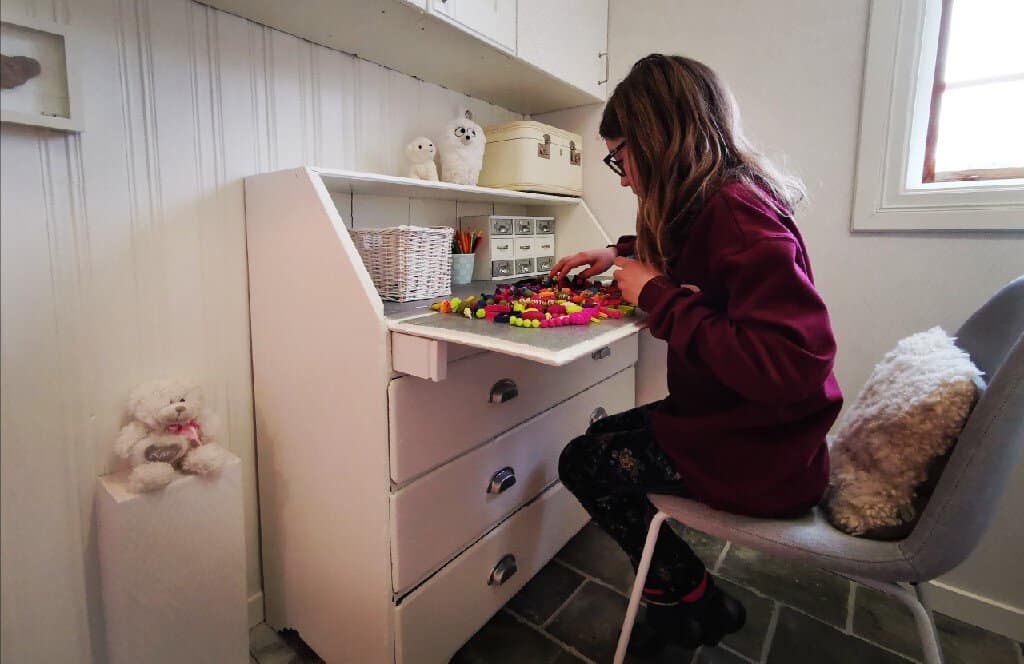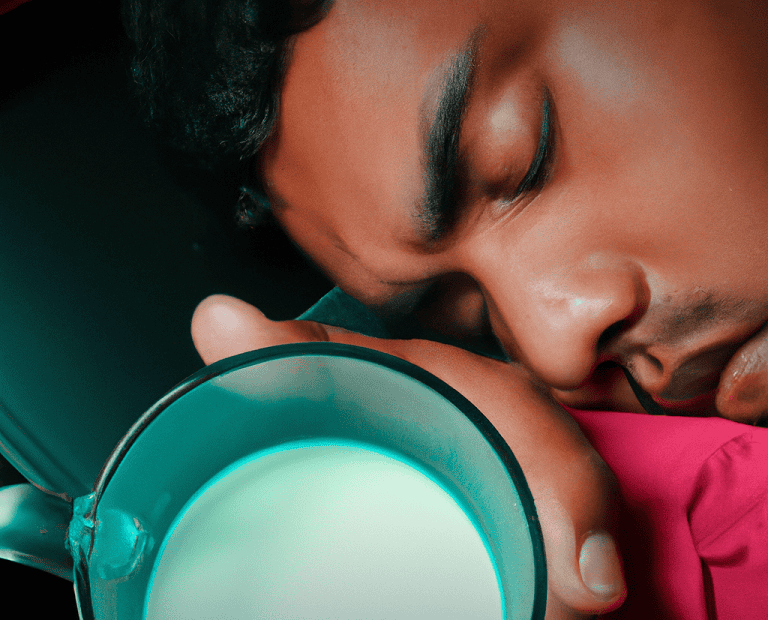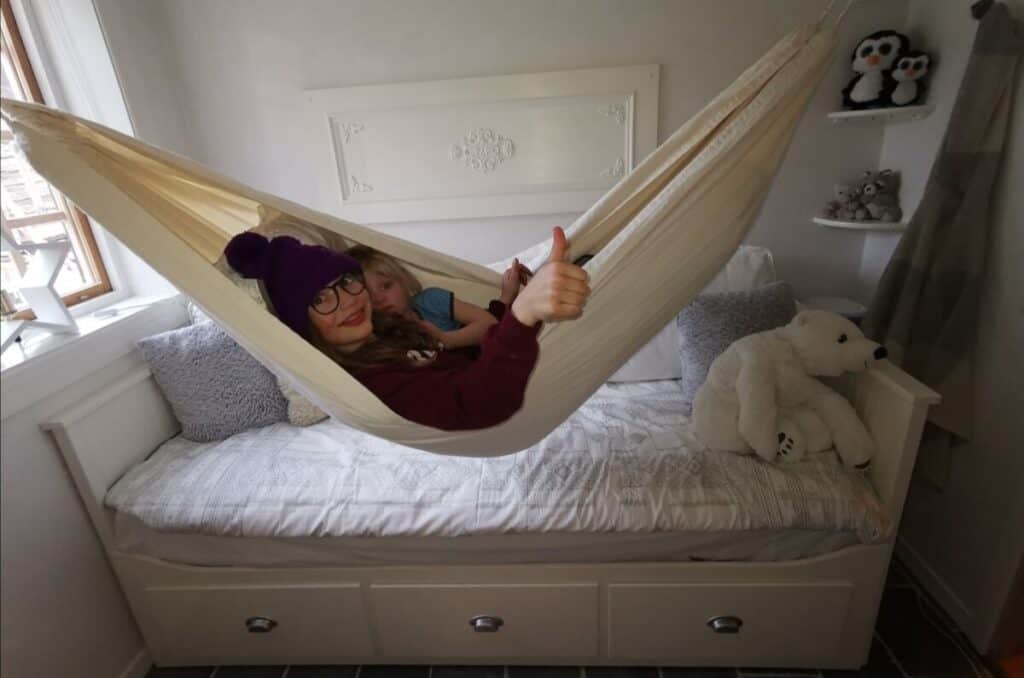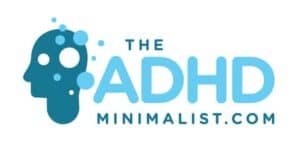
Tips for Helping Kids with ADHD Sleep! (Decluttering, Special Desks, and Six Blankets aren’t things you Immediately Associate with Sleep, but they Help Immensely!
Are you struggling to help your child with ADHD get a good night’s sleep? You’re not alone. Lack of sleep can exacerbate symptoms of ADHD and make it even harder for kids to focus and function during the day. In this article, we will explore five surprising strategies to help kids with ADHD sleep better. You can help your child establish healthier sleep habits and improve their overall well-being. Let’s dive in and start making a positive impact on your child’s sleep today.
If you found this article I assume that you already tried things like creating a calming bedtime routine, Melatonin, limiting screen time, going to bed and getting up at the same time every day, and making the bedroom a bit colder so you (or your child) do not wake up because you’re sweating.

Exchange Your Child’s Desk for a Secretary Desk
Consider swapping out your child’s traditional desk for a secretary desk if the desk is in their bedroom. Secretary desks provide a designated space for your child to work on homework or projects during the day, but can easily be closed up at night to create a more calming environment for winding down before bed.
Separating work and relaxation spaces, you can help your child establish a clear boundary between productivity and sleep in their bedroom. This physical separation can signal to your child’s brain that it’s time to shift gears and prepare for a restful night’s sleep.

Eat Sleepy Foods
We’ve all felt tired after eating. There are several theories for why certain foods make us sleepy. Eating foods rich in both Carbohydrates and protein seems to make people feel sleepier than other foods. This may be because the meal is rich in both tryptophan and Serotonin.
Some researchers believe that after eating your body produces more Serotonin. Serotonin helps regulate the body’s sleep cycles. Tryptophan occurs in foods that are rich in protein. It helps the body produce serotonin, and foods rich in carbohydrates help the body absorb the tryptophan.
Foods Rich in Tryptophan
- Salmon
- Poultry
- Eggs
- Spinach
- Seeds
- Milk
- Soy
- Cheese
Foods Rich in Carbs (Excluding Sugary foods)
- Pasta
- Rice
- Bread and crackers
- Corn
- Milk
Milk is the only food included on both lists. Directors of old movies seem to have the right idea. When people couldn’t sleep they went to the kitchen and drank a glass of warm milk.

Redecorate the bedroom and Declutter
It’s been said by Carlton Wagner of the Color Institute in Santa Barbara California that crazy colors on the walls can disrupt sleep patterns. He claims that it’s the mood the bedroom gives you before sleep. It doesn’t matter if you turn out the lights because the mood will stay with you. He also suggests not to use the color yellow in bedrooms because they saw more fighting and crying in yellow rooms during his research.
We redecorated my older kids’ rooms (My oldest boy has ADHD hyper, and my daughter has ADHD inattentive.) in calm monochrome color schemes. My daughter did a lot better in the new room because she no longer had loud wallpaper and toys on display. We gave all her things homes in her room and put them as much as possible behind closed doors or drawers. You can read more about how we fixed her room in my book Help! My Room EXploded.
My son didn’t really need a room makeover. He was pretty happy with decluttering. He created a calmer room by discarding everything he didn’t use. We redecorated in monochrome when he switched rooms with his sister.
Both my kids enjoyed their rooms more when we decluttered and organized. Having too much stuff makes it impossible for kids to keep a clean room. When kids have too much and loud wallpapers competing for their attention it is no wonder that kids can’t get to sleep.

Aroma Therapy
Try introducing calming scents into your child’s bedtime routine. Aromatherapy has been shown to help children with ADHD relax and unwind, promoting a more restful night’s sleep. Essential oils like lavender, chamomile, and cedarwood are known for their soothing properties and can be diffused in your child’s room before bedtime.
We used a diffuser for a while, but when it broke we began spraying a lavender and water mixture on our pillows before bed. We also tried using a small bag of lavender flowers beside our pillows, but that didn’t work as well as they spray. The dried flowers lost their potency too quickly. Our favorite was the lavender spray.
Gentle scents can create a sense of calm and relaxation, making it easier for your child to drift off to sleep. Experiment to find what scent works best for your child and incorporate it into their nightly routine.
Aroma therapy can create a soothing environment that promotes relaxation and better sleep, ultimately helping your child with ADHD get the rest they need to thrive during the day.
Adjust, Adjust, and Adjust Some More!
Another way to create a soothing environment in your child’s bedroom is by adjusting the lighting (including computer screens and phones), temperature, weight, and noise levels. Bright lights and loud noises can be overstimulating and make it difficult for kids with ADHD to relax and fall asleep.
Consider using soft, dimmable lighting and white noise machines to create a calming atmosphere that promotes better sleep. By reducing sensory distractions in the bedroom, you can help your child unwind and prepare for sleep. Adjusting these elements can improve their overall sleep quality and set the stage for a more peaceful bedtime routine.
In addition to these techniques, consider trying a weighted blanket to provide additional comfort and support for a restful night. The gentle pressure of a weighted blanket can help promote relaxation and reduce anxiety, making it easier for your child to drift off to sleep.
We tested a weighted blanket before we bought one. If you don’t know of anyone you can borrow a blanket from try using a clean handwoven rug or several extra blankets on top of the comforter that is usually used. If the weight is comforting consider buying a weighted blanket. You may want to talk to a salesperson before you buy because they come in several weights and use different products to achieve the same result. We tried blankets with chains inside and some balls among other things.
Consider removing computers and electronics from the bedroom to further enhance the sleep environment. The blue light can keep us up at night, and if you think your child is sneaking peeks at their screens it may be time to find a place for them outside the bedroom.
Conclusion
In conclusion, helping children with ADHD improve their sleep doesn’t have to be a daunting task. Unexpected ideas can make a significant difference in sleep quality and overall well-being. Start implementing one of these suggestions today.
You and your child should get the restful night’s sleep you deserve. Remember, a good night’s sleep is not a luxury, but a necessity for health and happiness.
